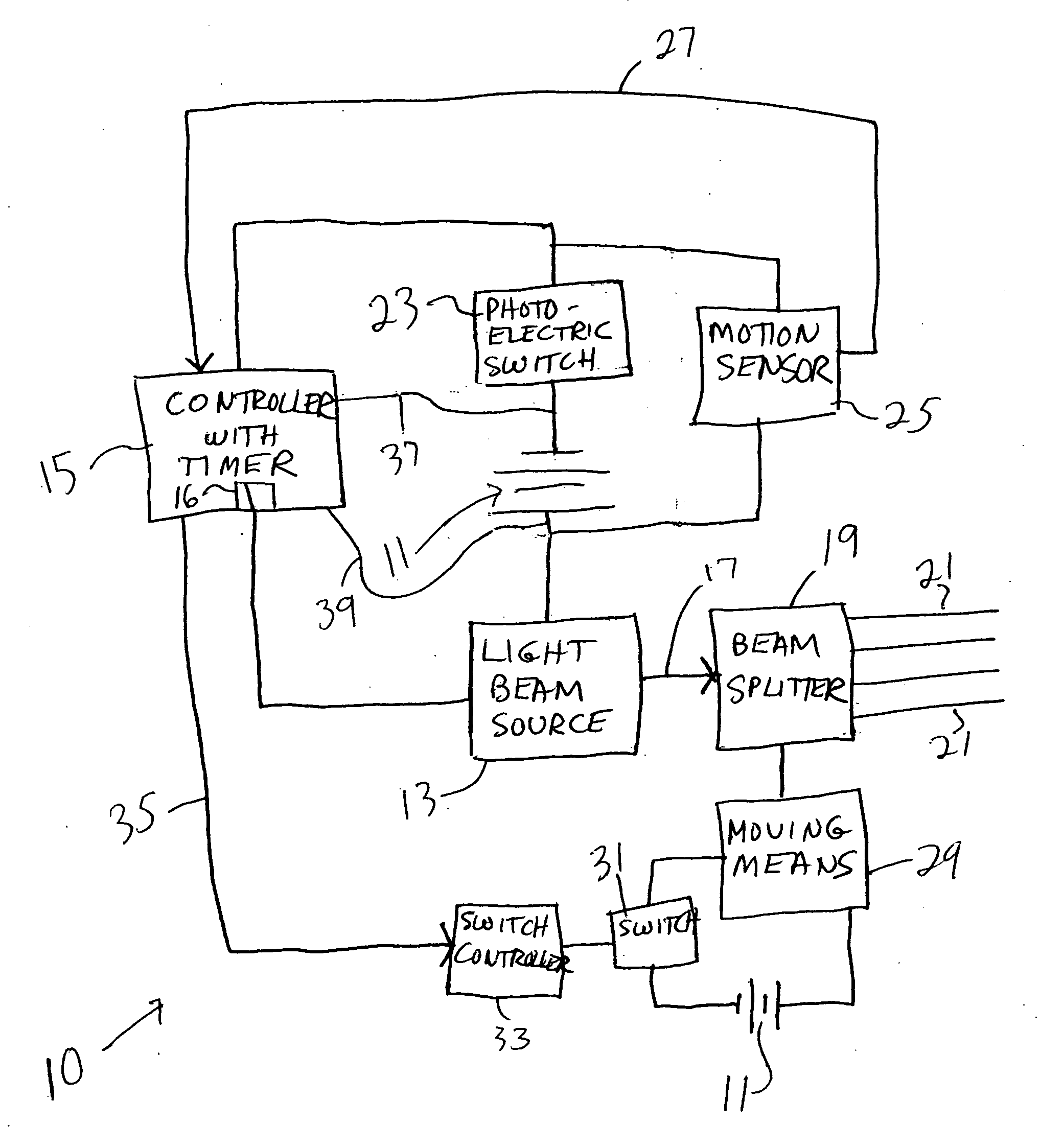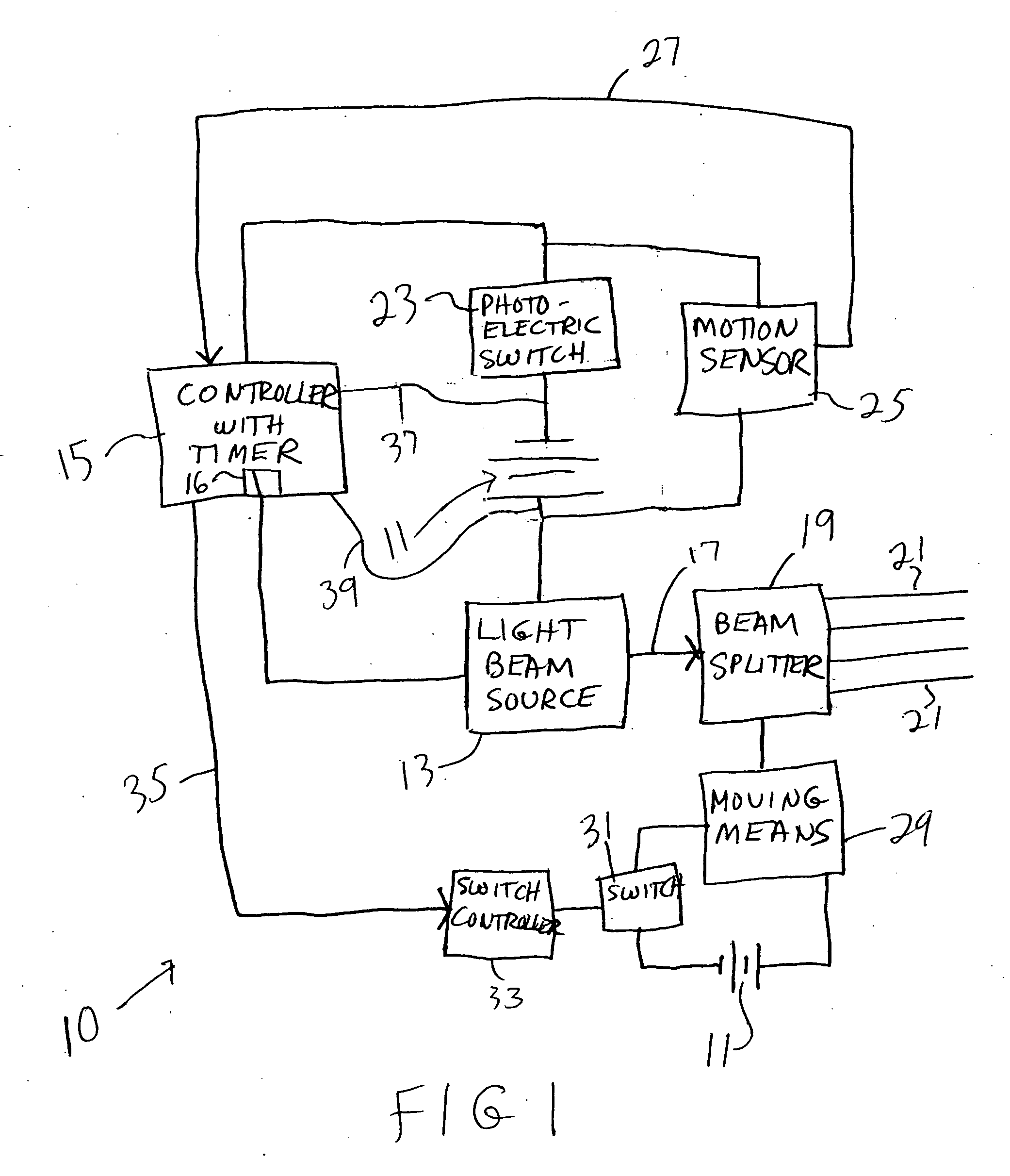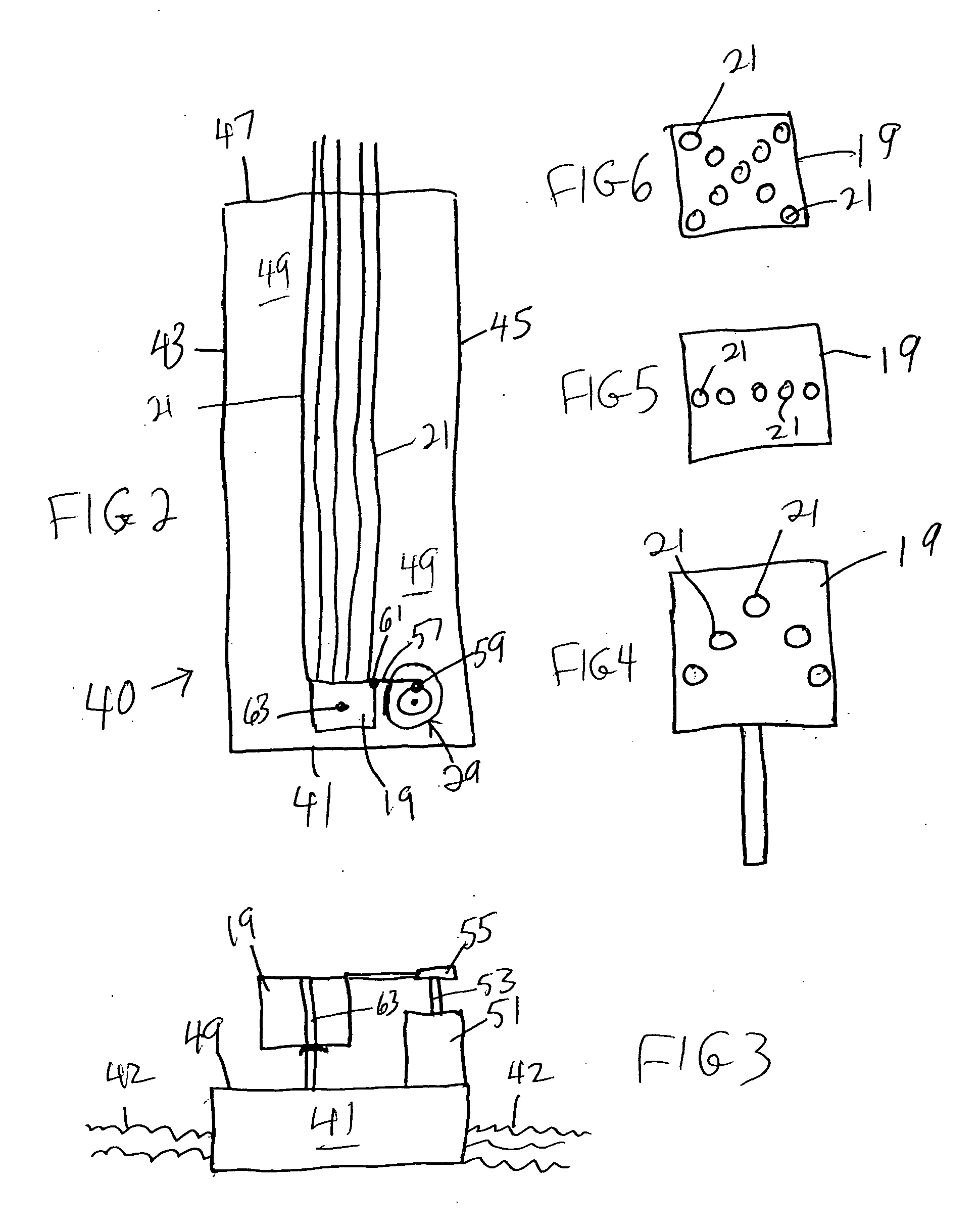Laser waterfowl repellent
a technology of laser waterfowl and repellent, which is applied in the field of laser waterfowl repellent, can solve the problems of not being the most neighborly thing to do, using a device in a residential neighborhood that emits large blasts of sound, and being difficult to obtain and care for
- Summary
- Abstract
- Description
- Claims
- Application Information
AI Technical Summary
Benefits of technology
Problems solved by technology
Method used
Image
Examples
Embodiment Construction
[0039] Reference is first made to FIG. 1 which shows a schematic representation of the electrical circuitry of the present invention. The circuitry is generally designated by the reference numeral 10 and is seen to include a source of power 11 which may, if desired, be 12 volt DC power, a light beam source 13, and a controller with timer 15. The light beam source may be a source of laser light or other concentrated light beam.
[0040] As seen in FIG. 1, a light beam 17 is emitted from the light beam source 13 and enters a beam splitter 19 where it is split into a plurality of beams 21. The beams 21, emitted by the beam splitter 19, are aimed within a region or space where it is desired to disperse and repel nuisance waterfowl.
[0041] The prime time of day when nuisance waterfowl are at their worst is typically from dusk until dawn. As such, a photoelectric switch 23 is provided in the circuitry 10. The photoelectric switch senses the dimming of light at dusk and the restoration of li...
PUM
 Login to View More
Login to View More Abstract
Description
Claims
Application Information
 Login to View More
Login to View More - R&D
- Intellectual Property
- Life Sciences
- Materials
- Tech Scout
- Unparalleled Data Quality
- Higher Quality Content
- 60% Fewer Hallucinations
Browse by: Latest US Patents, China's latest patents, Technical Efficacy Thesaurus, Application Domain, Technology Topic, Popular Technical Reports.
© 2025 PatSnap. All rights reserved.Legal|Privacy policy|Modern Slavery Act Transparency Statement|Sitemap|About US| Contact US: help@patsnap.com



